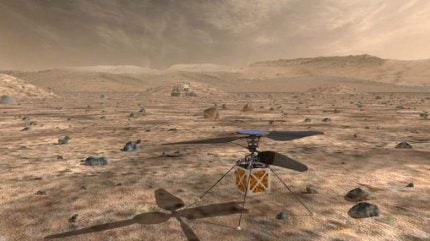
Nasa is set to send a helicopter to Mars as part of the agency’s next rover mission known as Mars 2020.
The ‘Mars Helicopter’ is a small, autonomous rotorcraft expected to show the viability and potential of flying heavier-than-air vehicles on Mars.
Developed at Nasa’s Jet Propulsion Laboratory (JPL) over four years, the helicopter will be used to demonstrate that big things can come in small packages.
The 1.8kg Mars Helicopter features fuselage that is about the same size as a softball.
The helicopter is also equipped with a pair of counter-rotating blades that will cut into the thin Martian atmosphere at almost 3,000rpm.
It includes various built-in capabilities, such as solar cells to charge its lithium-ion batteries and a heating mechanism to keep it warm during cold Martian nights.

US Tariffs are shifting - will you react or anticipate?
Don’t let policy changes catch you off guard. Stay proactive with real-time data and expert analysis.
By GlobalDataBefore launching Mars Helicopter, the aircraft will be attached to the belly pan of the Mars 2020 rover, which is scheduled to be sent to the red planet by July 2020 on a United Launch Alliance (ULA) Atlas V rocket from Cape Canaveral Air Force Station in Florida, US.
JPL Mars Helicopter project manager Mimi Aung said: “The altitude record for a helicopter flying here on Earth is about 40,000ft.
“The atmosphere of Mars is only 1% that of Earth, so when our helicopter is on the Martian surface, it’s already at the Earth equivalent of 100,000ft up.
“To make it fly at that low atmospheric density, we had to scrutinise everything, make it as light as possible while being as strong and as powerful as it can possibly be.”
Following its landing on Mars, the rover will find a suitable location to deploy the helicopter and drive away to a safe distance to relay commands.
Mars Helicopter will perform a 30-day flight test campaign with up to five flights, each one increasing the distance up to a few 100m for as long as 90 seconds.


